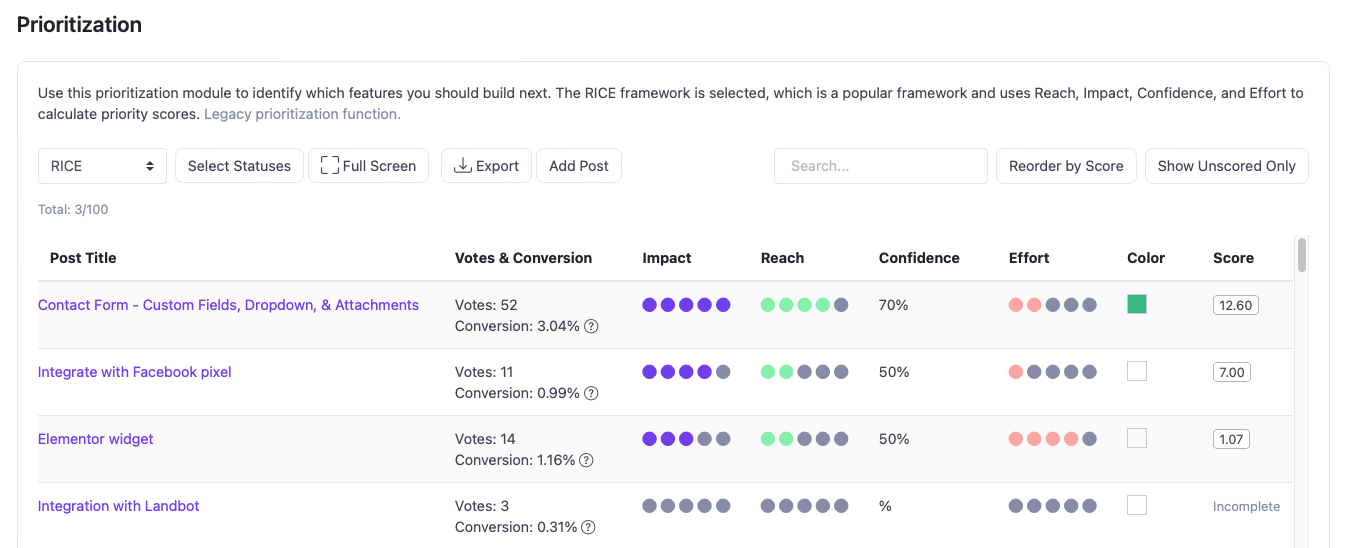Free RICE Template for Effective Prioritization

Ruben Buijs
To help you get started with RICE prioritization, we've created a collection of free templates available in various formats:
-
Google Sheets RICE Prioritization Template
What is RICE Prioritization?
RICE is a prioritization framework that stands for Reach, Impact, Confidence, and Effort. It helps product managers and teams evaluate and compare different initiatives based on these four factors:
-
Reach: How many people will this impact?
-
Impact: How much will it affect each person?
-
Confidence: How certain are we about our estimates?
-
Effort: How much time and resources will this require?
By combining these factors, you get a single score that allows you to compare and rank different ideas objectively.
For a more detailed explanation of RICE prioritization, check out: Understanding RICE Prioritization
About Our RICE Templates
Our RICE prioritization templates are designed to be:
-
Easy to Use: Input your estimates, and the template calculates the RICE score.
-
Customizable: Adapt them to fit your specific needs and context.
-
Collaborative: Share with your team to align on priorities.
Choose Your Preferred Format
Whether you prefer Excel, Google Sheets, PowerPoint, Notion, or Miro, we've got you covered:
-
Excel: Ideal for those comfortable with Microsoft Office.
-
Google Sheets: Perfect for real-time online collaboration.
-
PowerPoint: Great for presentations and sharing with stakeholders.
-
Notion: For those who use Notion as their productivity tool.
-
Miro: For visual collaboration and brainstorming.
Download Links
Looking for a Long-Term Solution?
While templates are great for quick prioritization, managing ongoing product decisions requires a more robust tool. ProductLift's prioritization feature offers a dynamic platform where you can:
-
Collaborate with Your Team: Invite team members to contribute and align on priorities in real-time.
-
Track Changes Over Time: Keep a history of how priorities evolve.
-
Integrate with Other Tools: Seamlessly connect with your existing workflow.
-
Move Beyond One-Time Documents: Establish a continuous prioritization process that adapts to your product's needs.
RICE Calculator Tool
For quick calculations without downloading a template file, try this online RICE Calculator tool: RICE Calculator


